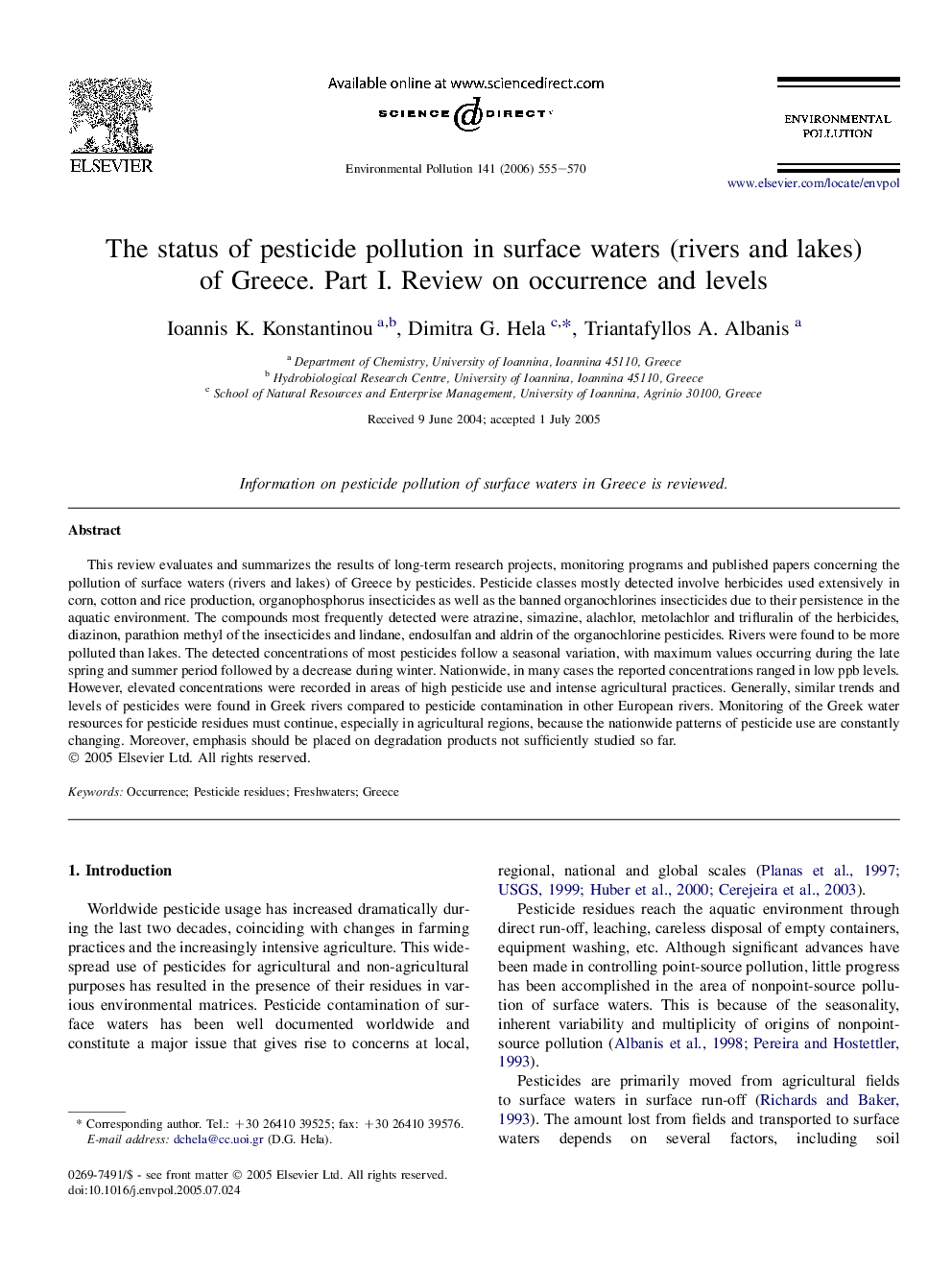| Article ID | Journal | Published Year | Pages | File Type |
|---|---|---|---|---|
| 4428067 | Environmental Pollution | 2006 | 16 Pages |
This review evaluates and summarizes the results of long-term research projects, monitoring programs and published papers concerning the pollution of surface waters (rivers and lakes) of Greece by pesticides. Pesticide classes mostly detected involve herbicides used extensively in corn, cotton and rice production, organophosphorus insecticides as well as the banned organochlorines insecticides due to their persistence in the aquatic environment. The compounds most frequently detected were atrazine, simazine, alachlor, metolachlor and trifluralin of the herbicides, diazinon, parathion methyl of the insecticides and lindane, endosulfan and aldrin of the organochlorine pesticides. Rivers were found to be more polluted than lakes. The detected concentrations of most pesticides follow a seasonal variation, with maximum values occurring during the late spring and summer period followed by a decrease during winter. Nationwide, in many cases the reported concentrations ranged in low ppb levels. However, elevated concentrations were recorded in areas of high pesticide use and intense agricultural practices. Generally, similar trends and levels of pesticides were found in Greek rivers compared to pesticide contamination in other European rivers. Monitoring of the Greek water resources for pesticide residues must continue, especially in agricultural regions, because the nationwide patterns of pesticide use are constantly changing. Moreover, emphasis should be placed on degradation products not sufficiently studied so far.
